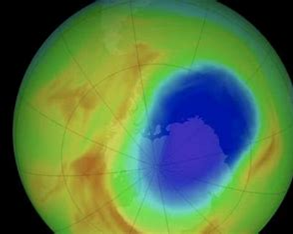New announcement made by NASA. Predicted to ‘fully heal within 50 years’, what caused the stratospheric ozone layer to deplete, and why is this significant?
The ozone layer protects us from the exposure of Ultraviolet (UV) rays from the sun, harmful to animals and plants alike, making us more vulnerable to diseases such as skin cancer and cataracts. As the ozone layer becomes frailer, more UV rays can penetrate this gaseous shield, placing us at greater risk whilst damaging plants and marine organisms.
In the 1980’s Chlorofluorocarbons (CFCs) were identified by scientists as one of the major contributors in ozone depletion. CFCs were contained in most generic aerosols, such as hairsprays and deodorants, as well as refrigerators, and were even found in inhalers (up until 2009) – some of which are still being released in landfills as products decay.
The ‘Rowland-Molina hypotheses’ identifies the properties of CFCs that lead to stratospheric ozone depletion:
– The persistence of CFCs, long lifespan and lingering presence in the atmosphere.
– Dissociation by UV, breaking down CFCs to release chlorine.
– Reactions of chlorine with ozone, chlorine breaks down ozone causing depletion.
Why ozone depletion has been greatest over Antarctica:
– Low temperatures.
– Ice crystals, providing surface area for the reaction of UV with CFCs.
– Stratospheric clouds, also increase surface area for reactions.
– Polar Vortex winds, concentrating the chlorine, prevents mixture of Antarctic air with the rest of the atmosphere.
The Montreal Protocol, 1987, banned the release of CFCs and regulates production of many other ozone-depleting chemicals, providing step by step plans in order to allow both developed and developing countries to adjust to the new way of living.
This agreement is most likely the main factor allowing the Ozone layer to recover,
‘The ozone hole over the South Pole has shrunk by 700,000 square miles…compared to this time last year’
and was described as,
‘One of the most successful multilateral agreements in history’
by Erik Solheim, head of UN Environment.
Although the ozone hole has increased slightly this year, most likely due to the colder weather, overall, its size is decreasing, and will hopefully result in returning to the size it once was prior to the 1980’s.
Sources:
• Phys.org
• Dailymail.com
• UN environment program
• CNN

